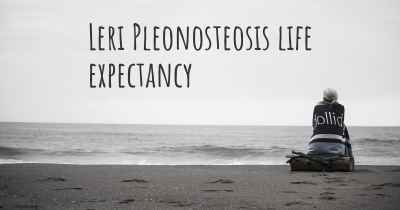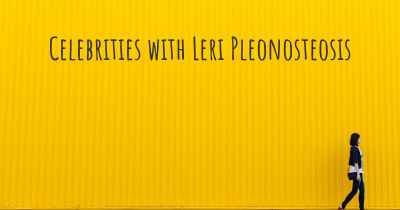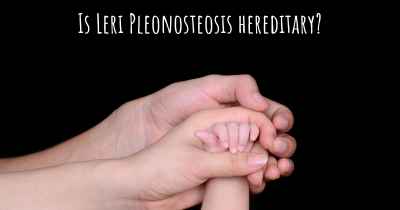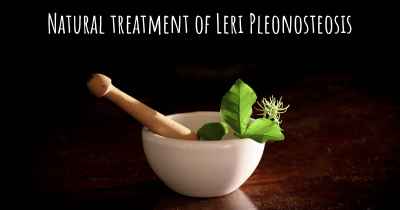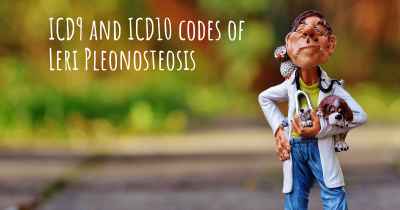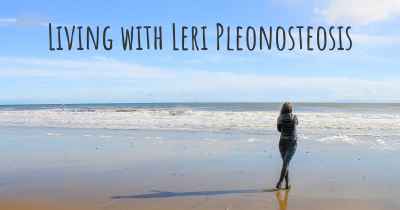Which are the symptoms of Leri Pleonosteosis?
See the worst symptoms of affected by Leri Pleonosteosis here
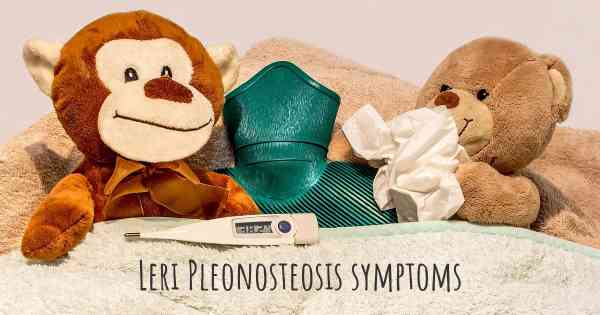
Leri Pleonosteosis, also known as Leri Weill dyschondrosteosis or Leri Weill syndrome, is a rare genetic disorder that affects bone growth and development. It is characterized by short stature, skeletal abnormalities, and other distinctive features. The condition primarily affects the bones of the arms and legs, particularly the forearms and lower legs.
Short stature: One of the main symptoms of Leri Pleonosteosis is short stature. Individuals with this condition tend to be significantly shorter than their peers. The short stature is usually evident from early childhood and persists into adulthood.
Madelung deformity: Another hallmark feature of Leri Pleonosteosis is the presence of Madelung deformity. This refers to the abnormal development of the wrist bones, leading to a characteristic deformity. The radius bone in the forearm may be shorter than normal, causing the wrist to tilt towards the little finger. This can result in limited range of motion and functional impairment of the affected wrist.
Bowing of the forearms: Individuals with Leri Pleonosteosis often exhibit bowing of the forearms. This means that the radius bone in the forearm curves outward, giving the appearance of a bent or bowed arm. The degree of bowing can vary among affected individuals.
Shortened and bowed lower legs: In addition to the forearms, the lower legs may also be affected in Leri Pleonosteosis. The tibia bone, which is the larger bone in the lower leg, may be shortened and bowed. This can lead to a distinctive appearance and may cause difficulties with walking and mobility.
Joint abnormalities: Joint abnormalities are common in Leri Pleonosteosis. The affected joints may have limited range of motion and may be prone to stiffness and pain. The wrists, elbows, and knees are often affected, and these joint abnormalities can further contribute to functional impairment.
Other features: Some individuals with Leri Pleonosteosis may have additional features such as a short neck, a broad chest, and a rounded face. They may also experience hearing loss, particularly conductive hearing loss, which is caused by abnormalities in the middle ear.
Leri Pleonosteosis is caused by mutations in the SHOX gene, which plays a critical role in bone development. The condition is inherited in an autosomal dominant manner, meaning that an affected individual has a 50% chance of passing the condition on to each of their children.
Diagnosis of Leri Pleonosteosis is typically based on clinical evaluation, assessment of growth parameters, and radiographic imaging. Genetic testing may also be performed to confirm the presence of SHOX gene mutations.
Treatment for Leri Pleonosteosis is primarily focused on managing the symptoms and improving quality of life. This may involve physical therapy to improve joint mobility and strength, orthopedic interventions to correct skeletal abnormalities, and hearing aids or other interventions for hearing loss.
In conclusion, Leri Pleonosteosis is a rare genetic disorder characterized by short stature, Madelung deformity, bowing of the forearms and lower legs, joint abnormalities, and other distinctive features. Early diagnosis and appropriate management can help individuals with Leri Pleonosteosis lead fulfilling lives despite the challenges posed by the condition.
